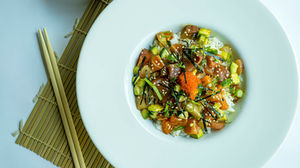Must-Taste Muscat!
- Your Hunter Valley Magazine
- Jul 1, 2019
- 2 min read

Muscat (Moscato in Italy or Moscatel in Spain and Portugal) is the name given to one of the oldest grape families in the world and is said to have originated in the Middle East. The Muscat family of grapes include over 200 grape varieties belonging to the Vitis Vinifera species that have been used in various forms of wine production throughout the world for many centuries.
There is no one "true" Muscat, but rather a great many incarnations, each with its own regional character. Today, the grape is found throughout the wine-producing world making a wide range of wines from light, sweet sparkling and semi-sparkling wines to dry and fortified Muscat such as that found in Australia.
Muscat Blanc à Petits Grains is a white wine grape and is the oldest member of the Muscat family and perhaps the oldest domesticated grape variety in the world. The variety is named for its characteristic small berries and seeds (petits grains).
While technically a white grape, it is common for various Muscats to change the colour of their skins from vintage to vintage – for example, there are strains of Muscat Blanc à Petits Grains vines that produce berries that are pink or reddish brown. The same vine could also produce berries of one colour one year and a different colour the next. These strains are more prevalent in Australia where the grape is also known as Frontignac and Brown Muscat Variants, where the differing grape colour is stable, are typically classified as separate grape varieties Muscat Rouge à Petits Grains for red skin colour and Muscat Rose à Petits Grains for pink skin colour.
Muscat of Alexandria or Muscat Gordo Blanco (also known as Lexia in Australia) is the second-oldest member of the Muscat clan and produces lighter wines that are usually soft and fruity. The distinctive grapey aroma of Muscat is one of its chief properties, but the variety’s versatility also makes it an attractive option for winemakers.
Drawbacks include low acidity and an inability to age more than about four years (except fortified Muscat). Muscat may be produced as dry, medium, sweet, sparkling or even dessert wine.
Being a typically sweet, rich wine that may have spicy notes, it is a wine often served on its own after a meal as a dessert wine, but it can be paired with food that has a similar sweetness and richness.
Muscat is excellent with fruit-based desserts – banana and vanilla custard or caramel slice, full-bodied cheeses such as blue cheese and gorgonzola, milk chocolate and dry cookies, such as biscotti.











































































































